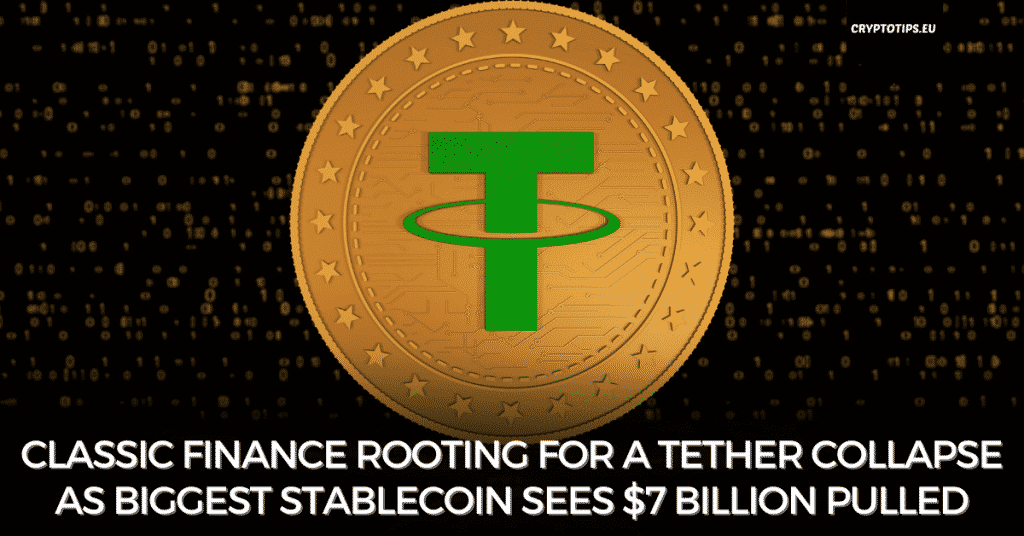Classic Finance Rooting For A Tether Collapse As Biggest Stablecoin Sees $7Billion Pulled
Last Updated on 18 May 2022 by CryptoTips.eu
Praise should be given when it is deserved, even if one is reluctant to give it, is the best known explanation of the proverb credit where credit is due (though I personally prefer render to Caesar the things that are Caesar’s).
And so we must above all admit that CryptoWhale, the bearish crypto influencer who has been forecasting bad times for Tether, might just have been right.
BREAKING: New York Supreme Court has REJECTED Tether’s petition to block the public from receiving documents detailing the composition of Tether’s reserves over the past few years.#Tether #Bitfinex $USDT pic.twitter.com/14ijOZnws7
— CryptoWhale (@CryptoWhale) May 16, 2022
Ever since last week, as the UST stablecoin (TerraUSD, once a top-five stablecoin) linked to Terra’s Luna collapsed, traders have been on edge. So much so that they’ve yanked a fabulous $7 billion from Tether ever since the world’s biggest stablecoin last week briefly lost its peg against the US dollar.
The move is intensifying concerns about the assets that underpin the global cryptocurrency market and their stability. Classic finance is hoping for a crypto crash now more than ever, and they’re looking at Tether to make it happen.
ECB and IMF monitor Tether
By now, the uncertainty reining Tether has even reached the European Central Bank. Fabio Panetta, an executive board member at the European Central Bank warned that:
There is no guarantee that stablecoins can be redeemed at par at any time — just last week the world’s biggest stablecoin temporarily lost its peg to the dollar.
It is an illusion to believe that private instruments can act as money when they cannot be converted at par into public money at all times.
“Yes that’s right I’d like to buy 100M of Tether credit default swaps” pic.twitter.com/eaHut1gixA
— Inverse Cramer ETF (Not Jim Cramer) (@CramerTracker) May 14, 2022
Even the International Monetary Fund, the IMF, is apparently keeping a close eye on what’s happening in crypto markets now. Tobias Adrian, director of the monetary and capital markets department at the IMF explained that:
There’s very strong outflow out of some stablecoins, but some inflow into other stablecoins. All of that is suggesting it’s time for stablecoins to really become stable.
Of course, if central banks want to keep printing fiat like there’s no tomorrow, aka like they’ve been doing for the past 14 years or so, there would be no better news for them than the collapse of stablecoins. It is clear that for all their soothing talk, bank directors worldwide are hoping for a crypto crash (just as Cardano CEO Charles Hoskinson explained last week).

